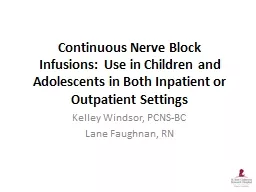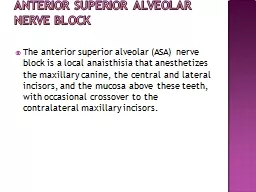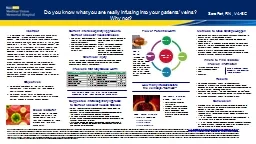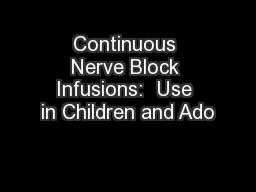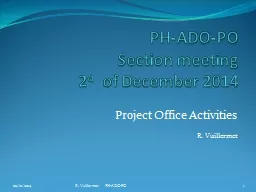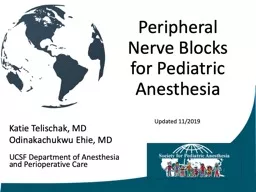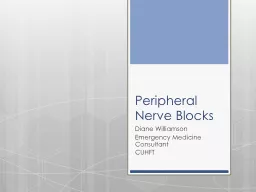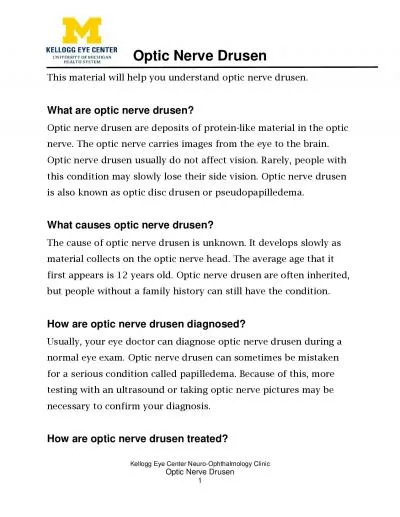PPT-Continuous Nerve Block Infusions: Use in Children and Ado
Author : kittie-lecroy | Published Date : 2016-05-13
Kelley Windsor PCNSBC Lane Faughnan RN Objectives Describe the experience of managing continuous peripheral nerve block catheters CPNBs at our pediatric hem onc
Presentation Embed Code
Download Presentation
Download Presentation The PPT/PDF document "Continuous Nerve Block Infusions: Use ..." is the property of its rightful owner. Permission is granted to download and print the materials on this website for personal, non-commercial use only, and to display it on your personal computer provided you do not modify the materials and that you retain all copyright notices contained in the materials. By downloading content from our website, you accept the terms of this agreement.
Continuous Nerve Block Infusions: Use in Children and Ado: Transcript
Download Rules Of Document
"Continuous Nerve Block Infusions: Use in Children and Ado"The content belongs to its owner. You may download and print it for personal use, without modification, and keep all copyright notices. By downloading, you agree to these terms.
Related Documents

